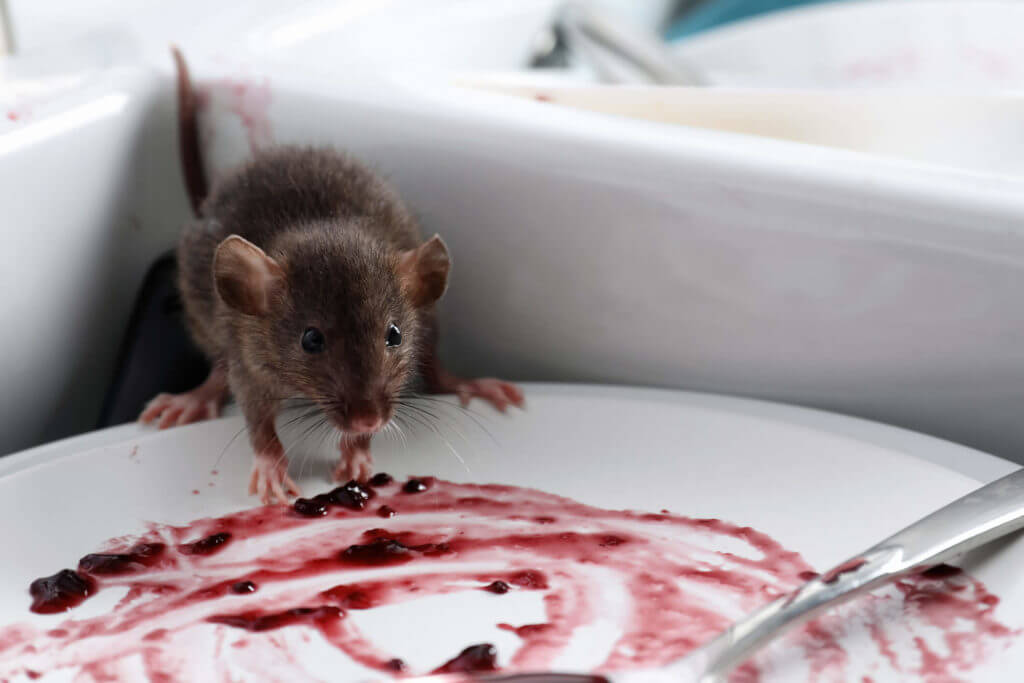Exerpt from Utah State University Extension article by Terry Messmer
Although the problems caused by rats and mice in Utah communities may not grab national headlines, the level of frustration experienced by homeowners dealing with these persistent, commensal rodents can be high. Commensal is a term used to describe animals typically found living near or with humans. Humans, through cultural, sanitation or building practices, are indirectly providing habitat for many of these species. Mice and rats are among the most widespread commensal wildlife species in Utah.
With the onset of cold weather, mice and rats may enter buildings as they search for food and shelter. They will eat a wide range of food, but prefer foods high in fat and sugar. Some favorites include chocolate, bacon, butter and nuts. Most water requirements are filled by the food they eat.
Because they are most active at night, they can roam undetected through a household. If you see them in the daytime, this may indicate you have a significant problem that needs to be addressed quickly. In addition to nibbling on food, mice and rats can nibble and cause structural damage. They also regularly urinate and defecate. The presence of droppings and the musky smell of urine from cupboards or drawers can indicate you have a high number of rodents in the house.
Prevent mice and rats from turning your house into their house with these tips.
• The best control method is to prevent entry. To exclude mice and rats from structures, seal all holes and openings larger than one-fourth inch. Use heavy materials such as concrete mortar, sheet metal or heavy gauge hardware cloth. Also, be aware of garages, houses, barns or doors with gaps greater than one-fourth inch. These create open invitations to mice.
• Make food in the house as inaccessible as possible. Store bulk foods in rodent-proof containers. Make sure spilled food and crumbs are removed. A left over cookie behind the couch cushion can feed a mouse for more than a week.
• In most cases, mice and rats can be trapped with wooden snap traps or glue traps. Because they have poor eyesight but excellent senses of touch and smell, they tend to travel close to walls and other objects. Thus, traps should be set close to walls where the rodents are usually active. For effective control, set at least six or more traps in the house and use small amounts of fresh bait. Peanut butter and chocolate work well. Do not use cheese, since it tends to go rancid when exposed to the open air for several days, thus losing its attractiveness as bait. Also, you may want to bait the traps without setting them for a day or so. When you notice the bait has been taken, set the trap. Because mice and rats can carry diseases, it is important to remove them from the house quickly. They should be buried or bagged and disposed of in an outside garbage container.
• Do not use rodenticides (poisons) to control mice and rats in homes. Rodents that feed on poison baits may die in the home, and as they start to decay, the resulting odor may cause more problems. Devices that repel rodents using electromagnetic or ultrasonic waves are widely advertised this time of year. There is no scientific evidence to support the manufacturers’ claims that these devices work.
• For more information, contact your local county Extension office for a copy of the Extension Bulletin “Mice” and “Rats,” or visit the USU Extension Web site at http://www.extension.usu.edu.
By: Terry Messmer – Nov. 10, 2008
For Help dealing with rodents in your home or property contact us at 801.477.8727 or send us a message here.


